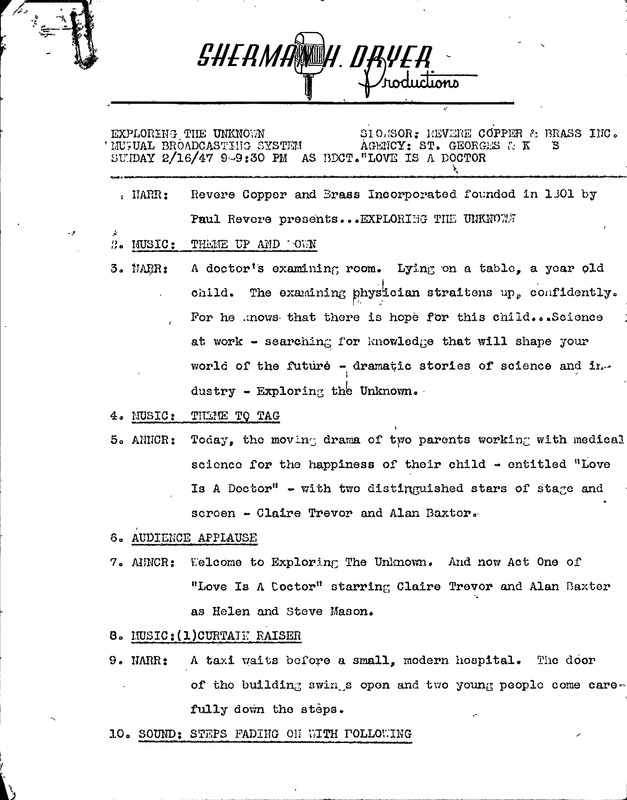Airwaves in the 1940s
During the “golden age” of radio, a time that ranged from roughly the late 1920s until the late 1940s, a variety of entertainment programs emerged on network broadcasts that proved narrative storytelling could successfully flow over the airwaves and into American homes. Radio developed rapidly from the time of its first transmission of the human voice in 1906, with the number of American households owning radios reaching more than 80 percent by 1940.
Even during the interwar years, the Depression did not slow consumers use of radio and after World War II, radio continued to reign as the leading contributor to variety shows, narrative programs, and news. These post-war years are when Alvin Boretz entered the radio industry and began a career as a freelance writer. During his early days in radio, he wrote numerous episodes for daily programs like Quick as a Flash, The Haunting Hour, and Five Minute Mysteries. As he developed his writing skills and portfolio, he quickly began to find projects that aligned with his desire to spread awareness of medical knowledge and the conditions of people often dismissed from society.
To achieve his goal of digging into tough stories, in 1947, Boretz wrote an episode for Exploring the Unknown called "Love is the Doctor," a story about a young couple learning their son has cerebral palsy. Due to his personal connection to his fictional story, Boretz was able to bring comfort and understanding to other struggling parents through his writings. "Love is the Doctor" is one of the many stories Boretz wrote in connection with medical professionals. At the end of the episode, Dr. William Cooper, an orthopedic surgeon and director of a cerebral palsy school, speaks to the audience as a way of helping them process the fictional story's material in relation to reality. The inclusion of professionals in these episodes bolstered Boretz's writings to give them weight in the minds of listeners. Other episodes he wrote, such as Jim Crow M.D.and The Hidden Million, explore the topics of racism in the medical field and the statistics of diabetes. Both episodes were in partnership with programs attempting to shed light on underinvestigated topics. Boretz's work with programs that wanted accurate depictions of real issues became a mainstay of his career. His work on topics such as mental illness, rehabilitation, and unwed mothers led him to develop deep and lasting connections with professionals across a variety of fields. "Love is the Doctor" even became one of the catalysts for the founding of United Cerebral Palsy in 1949.
Instead of "tiptoeing around the edge" of a tough subject, Boretz went "straight for the jugular." His theory of writing served him well throughout his career and granted him the ability to write detailed scripts that evoke emotion and intrigue. Even his writing for a more popular series like Big Town, a show about a newspaper editor fighting injustice and crime, provided Boretz with a platform to advocate for journalistic integrity and the end of corruption in cities. Though his work on Big Town was towards the end of radio's popularity, it helped move Boretz's writing into an even more visible realm.
Throughout the late 1940s and early 1950s, Boretz's writing was able to flourish in the medium of radio. Although the medium of radio was fading by Boretz's time, the industry provided him with the opportunity to learn his craft and begin to push pre-established boundaries of storytelling on the air.
